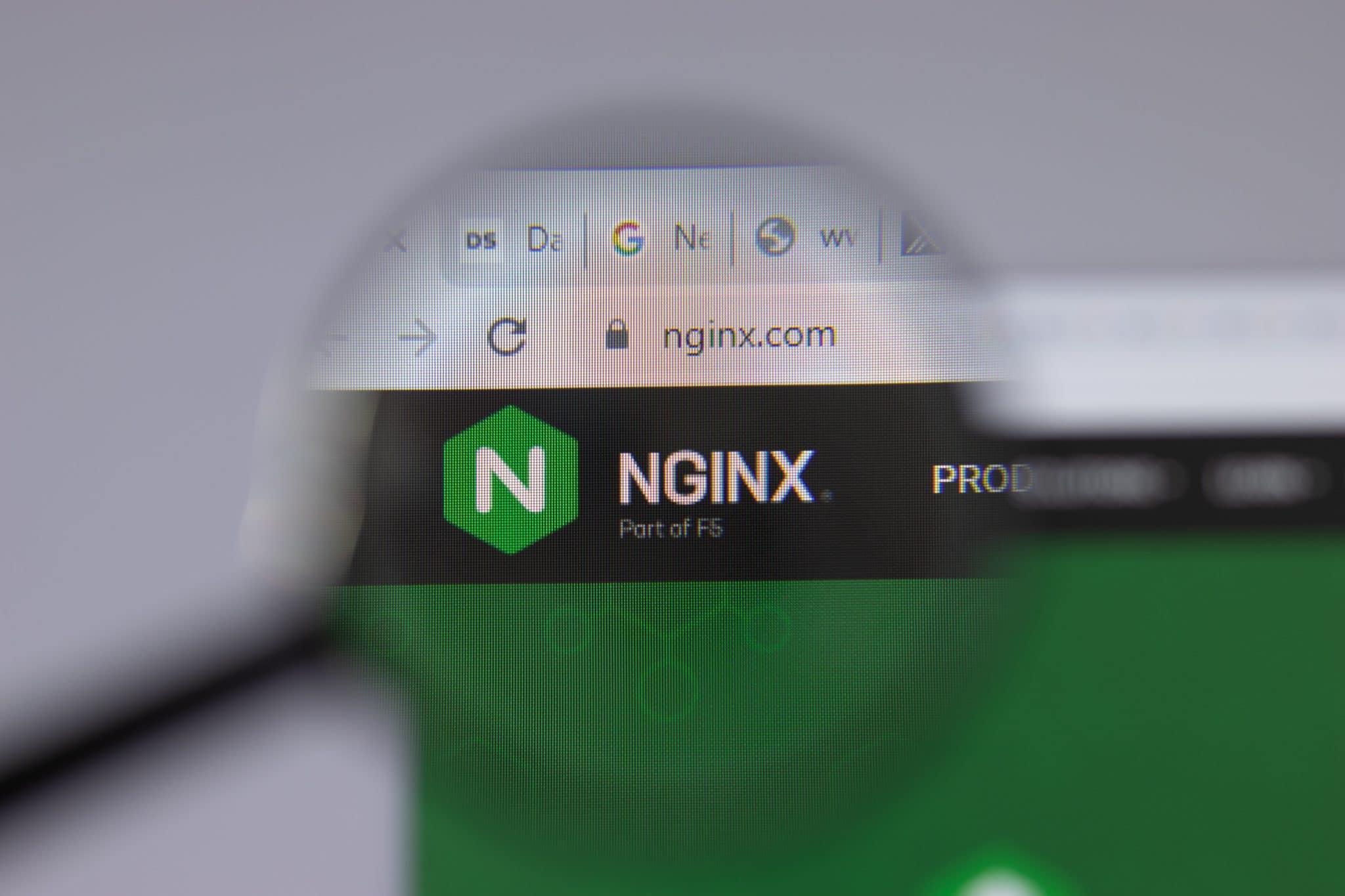A WordPress host is a business that houses all the information on your website. After you register for a plan, all of your photos, content, videos and other files are stored on the host’s data server. The WordPress host makes it simple to access, manage, and route data to your website users. This might seem straightforward at first glance. However, there’s much more to WordPress hosting than meets the eye.
There are three distinct types of WordPress hosts that you’ll come across on the internet. In this chapter, we’ll take a closer look at the advantages and disadvantages of each choice. It’s critical that you pick the appropriate one right away; otherwise, you’ll end up with problems and wasted effort.
Types of Hosting

Shared WordPress Hosting
Shared WordPress hosting is the first and most common of its kind. Among them are some of the industry’s biggest hosts — companies such as HostGator and Bluehost, as well as services such as GoDaddy, Siteground, and InMotion Hosting, are a few examples. They normally use cPanel and charge $3 to $25 per month on average.
Users of this form of hosting can encounter sluggishness at a certain point. This is because shared hosts often overload their servers, causing a site’s performance to suffer. Suspension of the site or regular 500 errors are also common occurrences as they must restrict all the sites and combine resources to stay afloat. Worse still, your website might go offline. The server for your WordPress site is most definitely shared with hundreds of other users, even though you aren’t aware of it. As a consequence, any problems that arise on other websites can spread to yours.
After accounting for costs, $3 a month generates no income for the hosting business, regardless of how you calculate it. On top of that, there are additional expenses for support. As a result, hidden charges and upselling account for a large portion of their revenue. Migrations, domain registrations, SSL certificates, and the like are examples of these upsells. Another popular strategy is to offer substantial signup incentives. However, when your contract is up for renewal, you will be presented with the actual bill.
The majority of these hosts advertise a plan that offers “unlimited resources.” This is likely familiar for most of us. But, in truth, having truly unlimited resources is impossible. In the shadows, hosts place an invisible cap on clients that use a significant amount of resources. As a result, those irritated clients leave, making way for new clients who don’t need many resources. This feeds into the hosting company’s vicious cycle of promoting low-cost plans and registering clients who they anticipate won’t need many resources and will buy upsells.
Owing to the sheer number of websites compared to support representatives, customer service and support for shared hosting are often inadequate. Shared hosts need to overextend themselves to generate a profit, resulting in negative encounters for the customer.
DIY VPS WordPress Hosting
DIY VPS, which stands for “Do it yourself on a virtual private server,” is the second kind of WordPress hosting. An example is the create your own VPS. Bootstrap startups and slightly more experienced WordPress users with some knowledge of server management usually go for this kind of hosting. This DIY crowd is typically made up of people who are always looking for ways to save money. However, they are also concerned about efficiency and recognize its significance in the future of the business. Using a third-party VPS provider like Linode, Digital Ocean, or Vultr is a popular setup. ServerPilot and other similar tools can also make it easier to handle.
DigitalOcean’s small VPS costs $5 per month, while ServerPilot’s most popular plan costs $10. So, you might be looking at a monthly cost of $5 to $15 or more based on your setup. While the DIY method can save money, it also means you’re responsible for fixing everything that goes wrong and for maximizing your server’s efficiency.
The DIY solution can be beneficial, but it can end in tears if you aren’t cautious. If you merely want to explore or aren’t well-versed in tech, this isn’t the path to take. Your time is valuable, and you can put it to better use by investing it in the development of your company.
Managed WordPress Hosting

Managed WordPress hosting is the third type. These are the sort of hosts who will take care of all of your back-end server tasks as well as help you when needed. They’re generally optimized for WordPress and provide features including one-click staging environments as well as automated backups. Since they are based solely on a single platform, their support staff is more knowledgeable on the ins and outs of how to use the CMS.
Depending on the scale of your site and your requirements, managed WordPress hosting plans will cost anything from $25 to $150 per month. WordPress is used to host the websites of prominent organizations such as Intuit, jQuery, Plesk, NGINX, Dyn, and the White House. WP Engine, Pressable, Flywheel, Pressidium, Media Temple, and Pagely are among the most commonly managed WordPress hosts you have either heard about or are using at present. Managed WordPress hosting is your best bet if you want to save time and get the best service.
The Features of Ideal WordPress Host
Whatever hosting service you use, there are certain server features that will ensure your website performs at the best speed. Here are some characteristics to look for in a good WordPress host.
For the Best Results, Look for PHP 7 or Higher
PHP is an open-source, server-side scripting and programming language that is mainly used for website creation. PHP is a very popular language for the WordPress community because it is used to write the majority of the fundamental WordPress applications, as well as the plugins and themes. As such, you should make sure that your WordPress host supports PHP 7 or higher.
Your host can offer various PHP versions on your server, with PHP 7.3 delivering significant improvements to performance. When evaluating PHP 7.3 against PHP 5.6 in recent PHP benchmarks, PHP 7.3 has been found to perform three times the number of transactions per second!
In addition, PHP 7.3 also performs faster by 9% on average, in comparison to PHP 7.2. As a result, this can also affect the responsiveness of your WordPress admin dashboard. The latest PHP versions provide faster speeds as well as increased protection. With a couple of clicks, you can easily modify PHP versions.
However, any WordPress hosts that sell HHVM as a PHP substitute should be avoided. Since HHVM does not officially support PHP, it is no longer a viable option for WordPress hosting.
An Nginx Server Is your Best Bet

A web server is used by every WordPress host to run your WordPress sites. Nginx and Apache are the most popular options.
Due to its foundations in performance optimization at scale, Nginx is the superior of the two. In benchmark testing, Nginx frequently surpasses other prominent web servers, mainly when dealing with static content or many simultaneous requests. As such, we advise you to go with a host that uses Nginx.
Google, Twitter, LinkedIn, Facebook, Intel, Apple, Microsoft, IBM, Autodesk, T-Mobile, GitLab, Adobe, Cisco, and many others are among the high-profile firms that use Nginx.
Apache is the most extensively used server, according to W3Techs, powering 44.0 percent of all websites. However, Nginx is the most prevalent web server among websites with high traffic (top 10,000), accounting for 41.9 percent, while Apache is responsible for only 18.1 percent. Many of the most resource-intensive websites, such as NASA, Netflix, and even WordPress.com, utilize Apache.
The Network of Your Host Is Crucial
You may not think to inquire or research what network a WordPress host uses when making a decision, but you should. The network can greatly influence your site’s performance and the responsiveness of your WordPress dashboard. Unfortunately, most hosts will disregard this in their marketing, since they prefer to save money by using the cheapest network.
Here are some questions to consider:
- What networks are you using for data transmission? Are most of the data transmissions done on public ISP infrastructures or private networks like Google or Microsoft? These major service providers have networks that are engineered and geared towards performance and low latency. They also have exclusive submarine internet cables!
- Is redundancy a feature that your network possesses? What if a connection is cut by mistake? This occurs far more frequently than you might imagine.
Google unveiled its standard tier network in 2017, which is a slower but less expensive network. While their premium tier network comes at an extra cost, it guarantees that you get the fastest speeds possible.
The premium tier network, according to Google, improves networking speed by minimizing the amount of time spent on the public internet. Packets enter and exit Google’s network near the user, then travel through Google’s backbone to reach the VM. On the other hand, the standard tier routes outgoing traffic from GCP to the internet through public transit (ISP) networks rather than Google’s network.
To say it simply:
- Premium tier transmissions spend more time on Google’s network and bounce around less, resulting in improved performance (at a higher cost).
- Standard tier transmissions spend less time on Google’s network and more time being passed around on public networks, performing poorer as a result (but at a cheaper cost).
What kind of effect does this have? Google’s premium tier network is 41% quicker on average than the standard tier network when transferring data between continents. When sending data to an adjacent region on the same continent, the premium tier is around 8% faster. While the network only accounts for a small percentage of the overall page load speeds, every millisecond counts!
Redundancy is also crucial, which is why Google uses at least three distinct pathways (N+2 redundancy) between any given Google network locations, ensuring that information passes between them even if there is a problem.
As you can undoubtedly imagine, a lot is going on in the background in the networking world. Check to see if your WordPress host is reliable and isn’t using the cheaper tiers to save money.
HTTP/2 Is a Necessity
HTTP/2 is an internet protocol that was introduced in 2015 to improve the delivery of websites. HTTPS (SSL) is necessary due to browser compatibility. It’s time to find a new WordPress host if your current one does not support HTTP/2. With the transition to HTTPS throughout the entire web, this is not simply an option; it’s a requirement.
HTTP/2 improves performance for several reasons, including better multiplexing, the ALPN extension, parallelism, and server push. There used to be a lot of TLS overhead when operating over HTTPS, but owing to HTTP/2 and TLS 1.3, that is no longer the case.
Another huge advantage of HTTP/2 is that you don’t have to worry about concatenation or domain partitioning with most WordPress sites. These optimizations are no longer relevant. Then it’s on to HTTP/3!
Choose Server Location Wisely

When it comes to hosting your WordPress site, one of the first steps is figuring out where the bulk of your visitors and customers are located. This is vital since your website’s server location substantially impacts the total network latency and TTFB. It also affects the responsiveness of your SFTP and WordPress admin dashboards.
If you are unfamiliar with the terms “network latency” and “TTFB,” here are their brief definitions:
- Network Latency: This is the time or delay associated with data transmission via a network. To put it differently, it’s the time it takes for data packets to travel from one place to another. This is usually measured in milliseconds, although depending on the network, it could be in seconds. This number should be as close to 0 as possible.
- TTFB: This refers to “Time To First Byte.” Basically, this is the amount of time it takes for the browser to get its first byte of data from the server. The longer it will take to obtain that data, the slower your page will load. Again, getting as close to 0 as possible is preferable.
Simply put, you should avoid having a high network latency and TTFB. Choosing a server that is nearest to your visitors is one of the simplest methods to achieve this. Here are some tips to help you select the ideal location.
Look Up Your Visitor’s Geolocation in Google Analytics
Examining your visitors’ geolocation in Google Analytics is one of the first steps you can take. This information can be found under Audience > Geo > Location.
For instance, if you observe that more than 90% of your visitors come from the United States, you should host your WordPress site on a server in that country. You may also narrow the data down to specific cities. If you’re a small business, this is vital. However, we usually suggest a central location such as Iowa, USA.
Examine E-commerce Stats
If you own an online store, be sure to look into where your buyers originate. Since this is how you make a profit, these are the people who are most valuable to you. This should correspond to the traffic you see in Google Analytics. This isn’t always the case, however. You can easily add e-commerce data or goals on top of geolocation data in Google Analytics to make a better-informed decision. Alternatively, check the database of your e-commerce platform for location information.
Perform a Quick Latency Check
There are several free tools available to assess latency for various cloud providers from your present location. This can assist you in swiftly determining which area is ideal for your site.
- GCP Ping: Latency to Google Cloud Platform regions is measured
- info: Latency to Amazon Web Services regions is measured
- Azure Latency Test: Latency to Azure regions is measured
For instance, there are times when the fastest speed from where you are is to Los Angeles, California, USA. However, if you’re serving customers from all over the country, Iowa, USA, maybe a better option to assure minimal latency for traffic from either the west and east coasts.
Other TTFB and Latency Reduction Techniques
There are a few other strategies to reduce latency besides choosing a close server location.
- When you enable caching on your WordPress site, you’ll see a 90 percent reduction in TTFB.
- Serve cached assets from POPs all around the world using a content delivery network (CDN). This reduces network latency for visitors who aren’t physically close to your host server.
- Using the HTTP/2 protocol’s parallelization, you can cut down the number of round trips.
- Minimize the number of HTTP requests. Depending on where their server is located, each of them can involve additional latency.
- Because DNS plays a role in TTFB, you should utilize a high-quality DNS service with quick lookup speeds.
- To execute work behind the scenes as the page loads, use prefetch and prerender.
Don’t panic! We’ll go through all of these tips in more detail in a different article.
The WordPress Admin Dashboard and SFTP Speeds

You should always put your visitors and clients first. But there’s another part of the performance that few people discuss: how some of these choices affect your daily operations. The speed of your SFTP downloads and uploads (moving files with an FTP client) and your WordPress admin dashboard’s responsiveness are affected by the data center location you choose.
As such, while you want to ensure that you pick the optimal location for your visitors, please take note that it may affect site management. When your site is hosted in a data center near you, activities like adding files to the WordPress media library will be much quicker.
Choose a location that is convenient for both you and your visitors! After all, you’ll be the one putting in thousands of hours on your website.
If you have any questions or need help with web design, reach out to us on phone or by sending a proposal. Contact us today and let us know the service you’re interested in.





